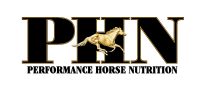Effects of
SOAKING HAY
ON CARBOHYDRATE CONTENT
2021

Written by Performance Horse Nutrition
Hay is the primary component in the equine diet. In recent years with the increased incidence of metabolic disorders such as laminitis and insulin resistance the carbohydrate content of hay has come into question. Pasture-associated laminitis is currently thought to be a sequel to over- consumption of certain carbohydrate fractions in forages, potentially associated with the development of chronic metabolic disorders such as insulin resistance, especially in overweight animals. Water soluble carbohydrates (WSC) are the predominant culprits in most grass forages.
One of the recommendations for horses and ponies suffering from these metabolic disorders is to reduce the WSC content of the diet. The current recommended upper threshold for WSC contents of diets for horses predisposed to laminitis is 45 g WSC/lb forage DM. In doing this a great emphasis has been placed on understanding the carbohydrate content of forages and ways to reduce this content. In an attempt to reduce the intake of WSCs, owners of horses and ponies predisposed to laminitis often soak the hay intended to be fed to such animals in water. It has been shown that nutrients, including water soluble carbohydrates, may be leached from hay during the soaking process. The current recommendation commonly used is to soak hay for 30 minutes in hot water or 60 minutes in cold.
Recent research may however alter this current recommendation of soaking hay as there is some evidence that soaking hay may not be the decrease the WSC content of hay adequately and consistently across all species of forage.
A recent study in the England evaluated the amounts of total WSC, WSC constituents and crude protein (CP) leached from a range of different grass hays, either shaken free of the flake or left compacted in the flake when soaked in just sufficient water to allow total submersion for various time periods. Nine different hay of mixed grass species were tested during the study. Hays were soaked for 20 minutes, 40 minutes, 3 hours and 16 hours, before water soluble carbohydrate content and crude protein content were tested.
There was no overall significant difference in the WSC contents of loose or dense hays after soaking. This suggests that water is capable of penetrating the hay quickly when it has been baled. Soaking for 16 hours resulted in only two of the hays containing less than 45 g WSC/lb DM, and two of the hays still contained in excess of 72 g WSC/lb DM.
The amounts of WSC lost from the different hays in the study varied greatly, which has been a common feature in other studies. This study illustrated that although soaking hay results in reductions of WSC content, the extent of the losses was highly variable between hays, and not related to their initial WSC content. No significant effects were shown for soaking time on CP content of the hays.
The authors concluded that when formulating diets that include soaked hays for horses and ponies predisposed to laminitis, hays with an initially low WSC content should be chosen and reanalyzed after soaking. As there was no apparent benefit of shaking hay loose from the flake on the decrease of WSC, it was recommend that hays should be soaked in compacted flakes, to reduce the potential negative impact of increased airborne particles on human and equine respiratory health.
So what now? Ultimately it is still critically important to test forages being fed to those horses sensitive to WSC. It may be beneficial to test hay after it is soaked according to the practices of your facility. The current study tried to emulate current soaking practices but each facility is slightly different and obviously depending on the grass species in your hay the outcome could vary greatly. Other options include incorporating a bagged low carbohydrate feed product into your horses ration. These products offer consistency and should have little variation in their WSC content from bag to bag.
Longland, A.C., C. Barfoot, P.A. Harris., 2011. Effects of soaking on water-soluble carbohydrate and crude protein content of hay. Veterinary Record. 168 (23):618-622.

